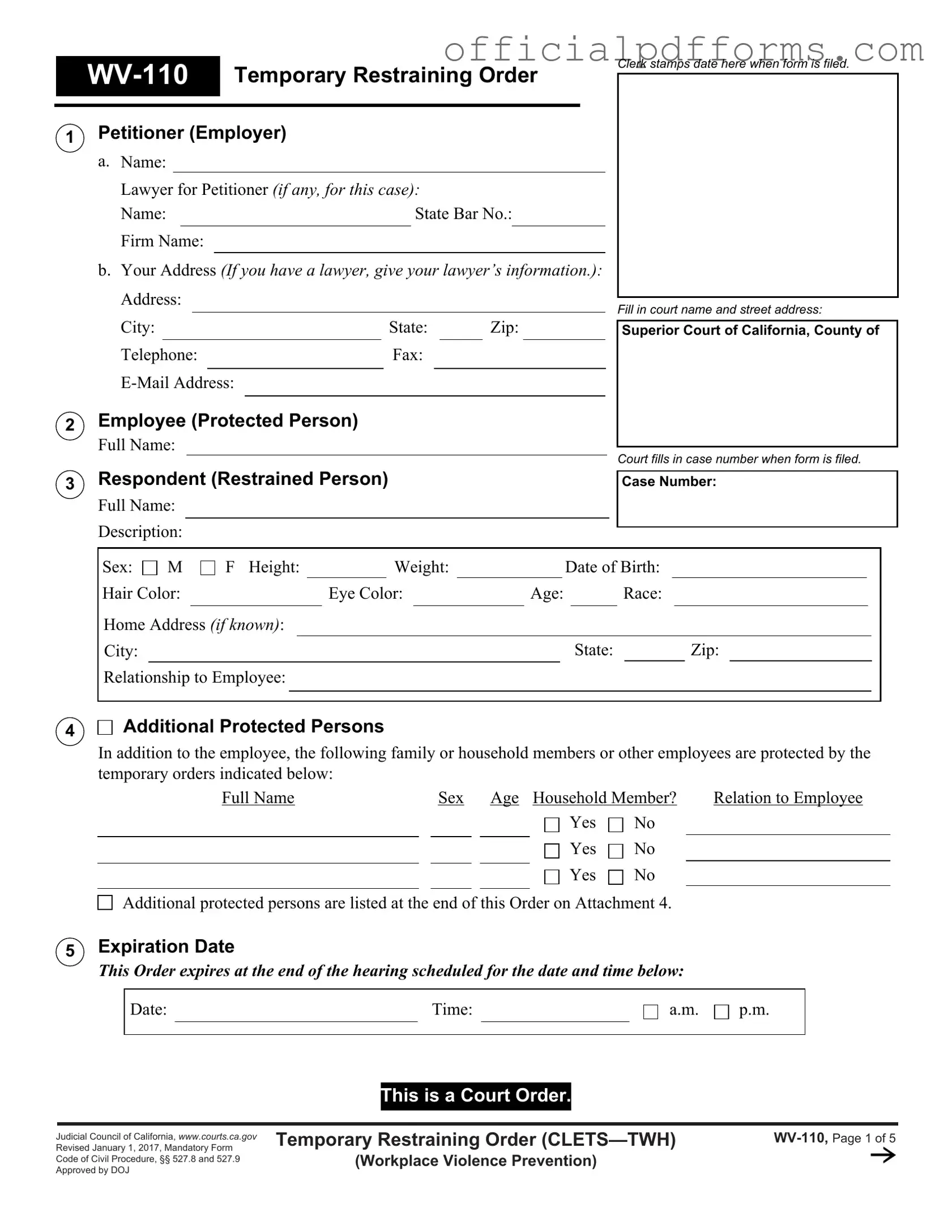A Fake Restraining Order form is a document that falsely represents a legal order meant to protect individuals from harassment or violence. Using such a form can lead to serious legal consequences, including criminal charges. It's essential to understand that any attempt to create or use a fake restraining order is illegal and can result in severe penalties.
What should I do if I receive a Fake Restraining Order?
If you receive what you believe to be a Fake Restraining Order, it’s crucial to take it seriously. First, verify its authenticity by contacting the court listed on the document. Do not ignore it, as failing to respond can lead to legal repercussions. If it is indeed fake, you may want to consult with a legal professional to discuss your options for addressing the situation.
Can I face legal consequences for using a Fake Restraining Order?
Yes, using a Fake Restraining Order can result in significant legal consequences. This may include criminal charges, fines, and even imprisonment. Courts take the misuse of legal documents very seriously, as it undermines the justice system and can cause real harm to others.
How can I protect myself from a Fake Restraining Order?
To protect yourself, keep detailed records of all interactions with the individual you believe may file a fake restraining order against you. Document dates, times, and the nature of your interactions. If you suspect someone is attempting to misuse the legal system against you, consider consulting a lawyer for advice on how to prepare and respond appropriately.
What steps can I take if someone files a Fake Restraining Order against me?
If someone files a restraining order against you that you believe is fake, respond promptly. Attend the court hearing and present evidence that supports your case. You can also file a counterclaim if applicable. Legal representation can be very beneficial in these situations, as an attorney can guide you through the process and help protect your rights.
Are there resources available for those dealing with Fake Restraining Orders?
Yes, there are various resources available. Legal aid organizations can provide assistance and guidance. Additionally, local courts often have self-help centers that can offer information on how to navigate the legal system. Online resources, including legal websites, can also provide valuable information on your rights and options.
